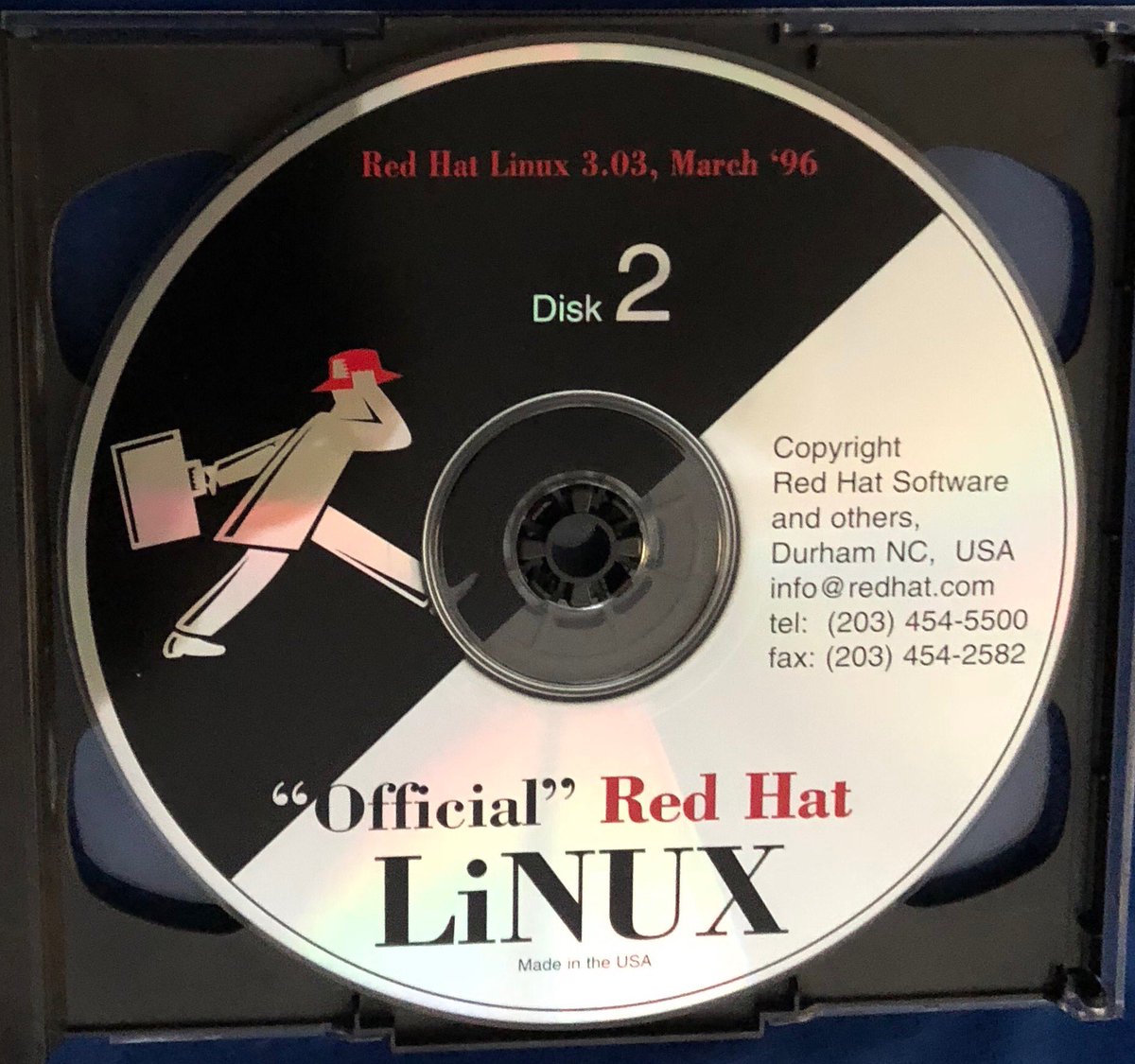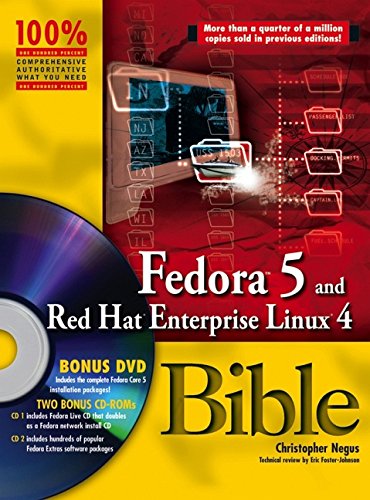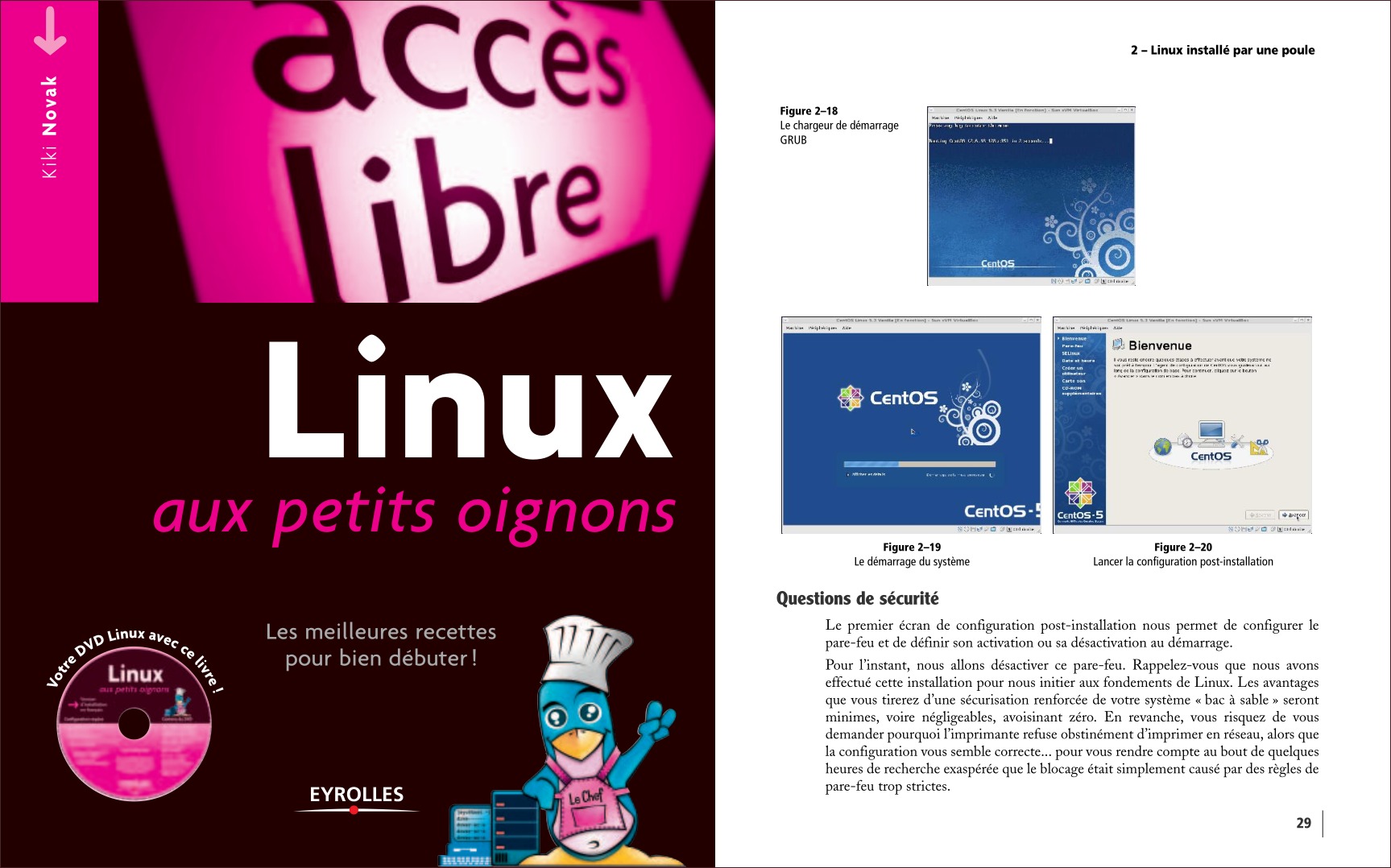From Memory’s Vault: My Times With Fedora, as Béranger
For what it’s worth, I’ve been a distro hopper since forever. I’m not sure if there’s any single distro that I have used as much as I used Win3·1, Win95, Win98SE, WinXP, or Win7, despite having used, on and off, Slackware, Red Hat, Debian, Mandrake, Mandriva, SuSE, openSUSE, Fedora, CentOS, Scientific Linux, StartCom Linux, Ubuntu, Xubuntu, Zenwalk, Wolfix, Vector Linux, KateOS, GoblinX, PCLinuxOS, Pardus, Parsix, Mageia, Linux Mint, and more, but also NetBSD, FreeBSD, OpenBSD.
2007: The Bad Guys
The hopping was not only triggered by the freedom of doing so, but also because I was never truly happy with any given distro for a very long time. Well, you know how it is with Linux. That meant, among others, that I expressed my criticism whenever and wherever I could; on my blog, that happened roughly between 2005 and mid-2011, with another session between mid-2013 to mid-2014. The current blog, started in 2016, cannot compete with my thousands of previous blog posts from the “good old days.”
My rants weren’t always appreciated back then, some people being “allergic” to me. For an example, let’s take this thing from 2007, currently only preserved here: The Sorry State of the Open Source Today.
The typical kind of reactions were like these comments on OSNews:
He does come up with some FUDdish statements but that’s to be expected when an old grouch is looking back on his life. His article is more about himself than open source – that leads to the question. Who is in a sorry state: The author or Open Source Software?
This kind of feedback was far less typical:
I just read the rather excellent article The sorry state of Open Source software on The Jem Report. I will let the article speak for itself, I enjoyed the read!
This guy decided to rant out because he feels incompetent about his own failure to use open source software.
funny that at the end he says he wrote the article on a kubuntu and on a pardus system, after almost accusing the two for the destruction of Linux before. you might think that he was testing the two systems, but then he goes ahead saying that we’re all humans after all. this brings only one word in my mind: hypocrisy.
From a Russian forum, translated by Google:
– A depressive young man, as if he was put up against the wall in front of a platoon of SS submachine gunners.
– I have not read the article, but I do not agree with the author.
– At least he rightly writes about the problems of the kernel – the development began to swamp, slowed down, many dangerous and irresponsible decisions were made, but stability was not achieved. And he is right that the first bell rang back in the days of 2.0.0, we all remember what it was for Glukalovo, what an evil disappointment it was.
– FUD.
– Quite a decent critical article.
– What a funny graphomaniac. This is how you can see the figure of the author, bent over the keyboard, gleaming with a red eye and selflessly booming with kilobytes of text. “Some of those youngsters happen to be Linux developers. Can you trust such childish developers for creating quality software ?!” What intensity of the pathos! And the secret is simple: fanatical BSD juggling at the slightest opportunity: “Currently, the best documentation on open-source software is The FreeBSD Handbook, and second-best is The OpenBSD FAQ.” Here is such a cute, funny deviation, like getting excited by the smell of sauerkraut. There is no sense from such hunters and alarmists. So let the little animal switch to its dearly beloved FreeBSD, OpenBSD, and even to hell. We don’t need those like that.
– I didn’t read it, the author’s disgusting cute face was enough for me.
– Depressive article, how old is the author? It seems to be too early before the midlife crisis (judging by the photo).
– A summary for those who do not follow the links:
1) The number of bugs in the kernel is growing, the API is unstable.
2) Open source means that security holes need to be patched VERY quickly. They don’t want to fix OpenOffice.
3) Patents are evil and utter stupidity. Especially American ones.
4) Patents are evil and utter stupidity. Especially American ones.
5) Patents are evil and utter stupidity. So is the Microsoft-Novell deal.
6) Fighting for GPLv3 is futile. That would be the energy for the development of HURD.
7) RHEL is the only profitable distribution.
8) There is neither “RPM hell” nor “DEB hell”. But it is full of problems with package managers and left repositories.
9) Distributions must have a stable branch. Like Slackware, Debian, RHEL…
10) In vain everyone is fond of 3D-desktops. Minimalism rules.
11) Freespire made a half-root. This is a security hole for the sake of convenience, a step towards Windows and the beginning of the end for everyone.
12) Sun is not open source’s friend. Because they’re busy making money.
13) Mono is rubbish. It cannot catch up with Java and Python, and PHP is more popular. Beagle – rubbish, gnome-search-tool was better.
14) Ubuntu lies about certificates, Novell uses MS Office, and Red Hat forgot about BSD and MIT licenses.
15) The documentation is bad.
16) Bugs are not fixed. Or they fix them, but not really.
17) Debian’s developers are really crazy.
18) Everything is bad with proprietary codecs.
19) In vain in kernel 2.6.20 they renamed hda to sda. (Is it true?!?!?)
20) Is the 2.6.16 kernel stable for the next 2-3 years?
21) KDE and GNOME will fight forever.
22) BSD rules. Especially OpenBSD.
23) You shouldn’t have forked X.org/XFree86, you shouldn’t have forked cdrkit / cdrtools, and Apache 2.0 might DoS itself.
24) Hibernation and standby don’t work.
25) All is not lost yet. I’m not a troll.
In general, there are many interesting facts mixed with subjective judgments.
PS: For those who did not understand: I do not always agree with the author’s conclusions 🙂
The reaction on the NetBSD side was modest, in four messages on netbsd-advocacy: 1, 2, 3, 4. On freebsd-advocacy, a frontal attack:
This man is the classical example of corporate guy, can’t live if the tools he uses aren’t provided by IBM, Oracle, Microsoft…
Strangely enough, it was Dag-Erling Smørgrav (DES) to speak the truth:
If you think he favors software patents, you need to read the article again – carefully. He does play the devil’s advocate early on, but he comes down squarely against them.
It was strange, because DES, FreeBSD developer and committer, member of the Security Team, is the same one to have written I broke Béranger’s heart. And The sorry state of The Jem Report. The next year, he will assert:
Béranger is still an idiot.
2007: The Good Guy
After a first contact with Red Hat Linux 3.0.3, I don’t remember having used it for long.

Much later, in 2005, I knew I was exploring Fedora 5 (Bordeaux) and CentOS 4. I even had this book in my shelf:

And this one:

I then attempted to find which RHEL clone was better: CentOS, Scientific Linux, or StartCom Linux. Each one managed to break different things now and then, and without access to a genuine RHEL, I had no reference. But I have used RHEL4 clones for a long time, on and off being it.
I remember having used Fedora up to and including Fedora 10, then skipping 11 and 12. Fedora 13 was a rather good release, but it couldn’t lure me back into it. Then nothing.
But in 2007, Fedora 7 was in the making. Among other things, I criticized Red Hat and Fedora in a number of posts, of which I recovered these:
- 2209: Impossible Objectives For Fedora Core 7
- 2467: Red Hat Challenge: Business-Only
- 2478: Fedora Community? Nope, 100% Red Hat
- 2523: CodecBuddy: Non-Objective Objectives
Max Spevack, the then Fedora Project Leader, bothered to answer on his blog with an exceptional open-mindedness: intelligent, rational feedback is good. Quotes, with the links to my blog posts adjusted to match the recovered ones:
So I sat down tonight with the intention of just relaxing a bit on a Friday, but one thing led to another with Google and the next thing I knew, I had found Planete Beranger — Open Source and Strong Opinions. A very interesting blog — the author, Radu Cristian Fotescu, offers his opinions on a variety of topics, and spends a decent amount of time on Fedora/Red Hat. Maybe some of you guys already know about this guy’s blog, but today was the first I’d ever seen it.
I really enjoyed reading it, because while the author is often quite critical of Fedora, he also seems like a pretty fair guy. When he sees something he dislikes, he says so. And when he sees something he likes, he also says so. For example, he offers a lot of praise to CentOS, so at least by association not everything that Red Hat or Fedora does can be wrong.
Anyway, now that I’ve found this site, I intend to visit it often, and try to respond to some of his complaints, since I think they are well thought out and well written. It’s criticism, not flames.
I can’t go back through all his posts about Fedora/Red Hat, but I’ll comment on some of the more recent ones. Let me say again, before anyone gets the wrong idea — I like the fact that this blog exists. I am happy to have found it, and I am writing about it now in order to give it the attention it deserves, because the author of this blog has been saying intelligent things for a long time, and I wonder how many people know it. And because I believe that well-reasoned criticism should be seen and discussed.
Codec Buddy
According to Radu, the rationale is “rational”, the scope is “limited” and we have “everything wrong” in the details, including the name.
My response:
I have updated the page on the Fedora Wiki that talks about this part of Fedora 7. The page was woefully out of date, and I think the update to it addresses some of his concerns.
I spoke with Thomas Vander Stichele at FUDCon and FOSDEM, and he is working on the code for GStreamer that will serve as the basis for this feature. I am hopeful that we will have something we can test soon, because we admittedly got a late start on this piece of Fedora 7, but I still think we can get it in.
Fedora 7 — Objectives, Artwork, and Lifecycle
In a brutally honest look at some of the issues in the Fedora Art Project, Radu makes a few points:
(1) Diana Fong’s Fedora 7 artwork is great.
My response — I agree, it looks gorgeous. The first time I saw it on my laptop screen, I was blown away.
(2) Fedora 7’s objectives (overall) are impossible to achieve in the 6 month timeframe. Our 1 month delay in release is a testament to that.
My response — We definitely gave ourselves a lot of work to accomplish for Fedora 7. I think it’s good to be ambitious, and not necessarily a bad thing to delay. Fedora has the luxury of being able to be flexible with our releases. We try for twice a year, because it’s important to put some markers in the ground, but we also don’t want to release something that isn’t ready. Fedora 7 has lots of moving pieces — different spins, a LiveCD, new tools for building the distribution (pungi). It’s a lot of change, and a lot of pain, but the benefits that we will see in the end shall be worth it. What we don’t finish in Fedora 7, we will in Fedora 8.
It’s not wrong to be aggressive. It is wrong to release a crappy product for the sake of a deadline that is somewhat artificial to begin with.
(3) It’s embarrassing that the Fedora Art community wasn’t able to see through their work on the Fedora 7 theme, and instead final say and design was handed to Red Hat’s Desktop team.
My response — He’s right. The work that the Red Hat Desktop team did on Fedora 7 is successful from an aesthetic standpoint, but failed from a community standpoint. And I don’t think it’s hypocritical of me to say that the Fedora 7 desktop looks great, but at the same time I am unhappy with the *process* by which it came into being.
Not all parts of the Fedora Project are equally community friendly. It is an unfortunate reality. We have chosen to spend a huge amount of time and effort in Fedora 7 revamping the release engineering toolchain and the Core/Extras merge, to empower the more technical members of the Fedora community.
The Fedora Art community, I must say, has demonstrated commitment and patience with us beyond what I ever thought it would. And I am grateful for that, more than I have been able to express. We’ve seen them graciously accept our failings with regard to community participation in the Fedora 7 theme, and watched them refocus their efforts on a variety of other artistic needs that the Fedora Project has, and which the Art team can be in charge of without fear of “meddling”.
There is a lot left to be done in the in Fedora Art, as well as in the area related to logo guidelines. It has not received the level of attention that it needs, not for malicious reasons, but mainly because no one has been able to really sit down and devote themselves to solving a whole bunch of small, but related, issues at the same time. The criticism that we have received is completely justified.
(4) The ability of users to spin their own distributions of Fedora is good.
My response — Yes, it is!
(5) (paraphrasing) The fact that old versions of Core are given their security updates by Red Hat engineering, coupled with the fact that the Legacy project ended, means that the whole idea of the Fedora community is fake, and Red Hat completely controls Fedora. What’s the role of the community after the merger?
My response — The entire reason why we are *doing* the Core/Extras merge, along with the external build system and compose tools, is so that future versions of Fedora (starting with 7) can be as fully in the community’s hands as they like. I believe that when the process for building a Fedora distribution is EXACTLY THE SAME regardless of whether you are inside of Red Hat or not — and by this I mean that when every piece of the toolchain from source code in a file to ISO on a disk — then there is nothing Red Hat can do that the community cannot do.
Fedora’s lifecycle is not meant to exist for years and years. That’s not the purpose of Fedora. That is why we have RHEL and CentOS. However, it is within the scope of Fedora’s mission to allow anyone who wants to *try* to maintain a release for longer than Red Hat engineering cares to devote resources to it to try. The way we enable that is by having a single Fedora toolchain. And that’s what we’re doing.
—
There’s a lot of other intersting posts, about a variety of Fedora/Red Hat topics. I’ll make you a deal, Radu. Keep calling it like you see it, and I’ll keep responding to what you write, because I think it’s a worthwhile conversation. Thanks for being a vocal critic, but also a rational one. I wish there were more folks like you, and I also wish that I gave you less to be critical of.
Let me tell you this: to date, I have never encountered anyone else in charge with a product or a project to have reacted this balanced and positively! So my reply was natural, and his too:
Beranger’s response to my post. Proof that it is possible to have a civilized discussion on the intarwebs! 🙂
Nothing like that nowadays. Today, in 2021, this is how they treated me in Ubuntu MATE and in Linux Lite. It was shocking to me.
I don’t remember much about the Fedora Project Leaders who followed, but Max was unique. Here’s an LWN interview with him after Fedora 7 was out; an interview given to Slashdot; and a goodbye interview.
Those times will never come back.
